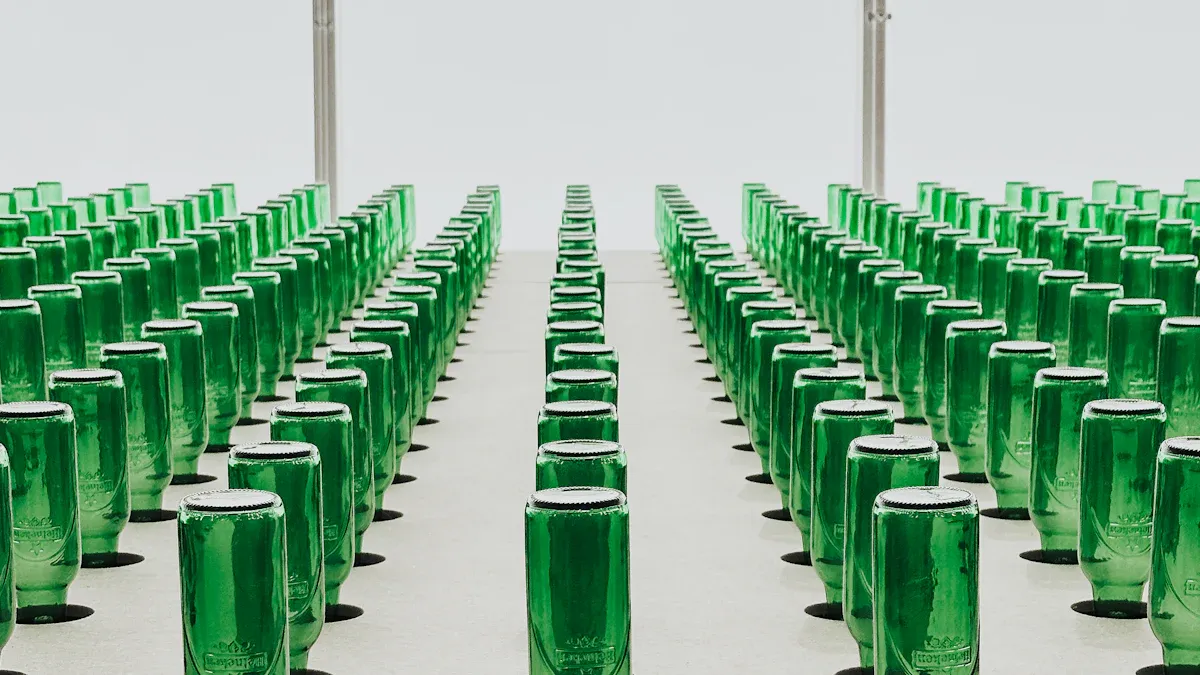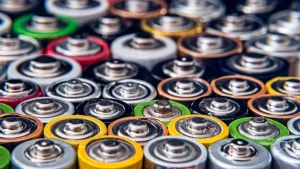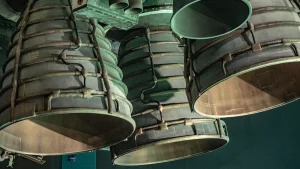
SiC Heating Elements offer a direct path to decarbonization in glass manufacturing. Traditional heating methods, which rely on fossil fuel combustion, contribute between 85% and 92% of total carbon emissions in the process. By enabling electrification, these elements increase energy efficiency and help reduce fossil fuel dependence.
Key Takeaways
- SiC Heating Elements replace fossil fuels with electric heating, cutting carbon emissions and pollution in glass production.
- These elements boost energy efficiency and improve glass quality by providing stable, even heat and precise temperature control.
- Using SiC Heating Elements with renewable energy helps glass manufacturers lower costs, reduce waste, and meet sustainability goals.
SiC Heating Elements and Emissions Reduction

Traditional Heating Methods and Their Carbon Impact
Traditional glass manufacturing relies on fossil-fuel-based heating systems. These systems burn natural gas or oil to reach the high temperatures needed for melting glass, often around 1350°C. This process releases large amounts of carbon dioxide and other pollutants, such as nitrogen oxides (NOx) and sulfur oxides (SOx), into the atmosphere.
According to industry data, about 80% of direct greenhouse gas emissions in container glass production come from burning natural gas for melting. The remaining 20% comes from the chemical breakdown of raw materials like sodium carbonate and calcium carbonate, which also release CO2 during the melting process.
The average carbon dioxide emissions per ton of flat glass produced using these conventional methods range from 0.8 to 1.6 metric tons. Plants with higher production volumes tend to emit more CO2 per ton. These figures highlight the significant environmental impact of traditional glass furnaces.
- Key contributors to emissions in traditional glass production:
- Combustion of natural gas and oil for heat
- Chemical decomposition of raw materials
- Energy losses through exhaust gases
This heavy reliance on fossil fuels creates a major barrier for the glass industry as it seeks to lower its carbon footprint.
How SiC Heating Elements Enable Electrification
SiC Heating Elements support the shift from fossil fuels to electric heating in glass manufacturing. These elements use electricity as their energy source and are typically installed on the side walls of electric furnaces. They provide indirect resistance heating, which means they heat the glass without direct contact with flames or combustion gases.
- Benefits of electrification with SiC Heating Elements:
- Electric furnaces eliminate exhaust gases, reducing air pollution and preventing the release of harmful smoke.
- The design of electric furnaces is more compact, including only the melting pool, throat, and ascending channel.
- Operators can maintain full load output and easily adjust power to compensate for heat loss, unlike gas-fired systems that degrade over time.
- Electric furnaces offer better working conditions, with automatic controls and fewer personnel needed.
- Maintenance becomes simpler because there are no combustion byproducts or waste heat recovery systems to manage.
SiC Heating Elements also provide excellent heat transfer and high thermal shock resistance. They can operate at temperatures up to 1,625°C, making them ideal for glass melting. Their use ensures stable, efficient heating and supports the transition to cleaner, electric-powered glass production.
Energy Efficiency and Lower Carbon Emissions
Electric heating systems using SiC Heating Elements achieve nearly 100% thermal efficiency. This high efficiency means less energy is wasted, and more of the input energy goes directly into melting the glass. In contrast, traditional gas-fired systems lose significant energy through exhaust gases.
Electric furnaces powered by SiC Heating Elements can also use renewable electricity, such as solar or wind power. When paired with renewables, these systems can achieve zero direct CO2 emissions during operation.
The precise temperature control offered by SiC Heating Elements improves glass quality and reduces the risk of defects. The absence of combustion-related emissions, such as CO2, NOx, and SOx, further lowers the environmental impact. As a result, glass manufacturers can significantly reduce their carbon footprint and move closer to meeting sustainability targets.
Operational and Environmental Advantages of SiC Heating Elements
Enhanced Process Control and Product Quality
SiC Heating Elements give glass manufacturers precise control over temperature during melting and forming. These elements deliver even heating across the furnace, which helps prevent hot or cold spots. Consistent temperatures reduce the risk of defects and improve the quality of finished glass. Operators can adjust heating quickly, which allows for better control of the glass’s thickness and clarity. The high thermal conductivity and resistance to chemical corrosion also help maintain stable operations. Custom designs further optimize heat distribution, supporting the production of flawless glass products.
Note: Uniform heating and reliable performance from SiC Heating Elements lead to fewer defects and higher yields, which means less waste and better product consistency.
Durability and Reduced Maintenance Needs
SiC Heating Elements last longer than traditional metal heating elements. Their robust material properties resist thermal shock, oxidation, and corrosion. This durability means fewer replacements and less downtime for maintenance. Although the initial investment is higher, the long service life and reduced maintenance lower total costs over time.
- Key operational advantages:
- Withstand very high temperatures (up to 1625°C)
- Exceptional resistance to harsh environments
- Lower energy consumption
- Minimized downtime and extended equipment lifespan
A comparison of heating element lifespans:
| Heating Element Type | Typical Lifespan (Years) | Key Durability Factors |
|---|---|---|
| Ceramic (e.g., SiC) | 5–15+ | High resistance to corrosion, oxidation, and thermal fatigue |
| Metal (e.g., Nichrome) | 1–5 | Susceptible to oxidation and thermal fatigue |
Integration with Renewable Energy Sources
Glass manufacturers can power SiC Heating Elements with renewable electricity, such as solar or wind. This integration allows facilities to reduce their carbon footprint and move closer to net zero goals. The high efficiency of these elements means less energy is wasted, and using clean energy sources further cuts emissions. When powered by renewables, SiC Heating Elements help companies comply with environmental regulations and support green manufacturing practices.
Tip: Combining SiC Heating Elements with renewable energy not only lowers emissions but also supports long-term sustainability for the glass industry.
Real-World Applications and Industry Adoption

Case Studies Demonstrating Decarbonization Impact
Many glass manufacturers have started using SiC Heating Elements to lower emissions and improve efficiency. For example, a European glass plant replaced its gas-fired furnace with an electric furnace using SiC Heating Elements. The plant saw a 30% reduction in energy use and a 40% drop in carbon dioxide emissions. Operators also reported better control over glass quality and fewer defects. In Asia, a specialty glass producer used SiC Heating Elements to power its melting process with renewable electricity. This change helped the company reach its sustainability targets and reduce its carbon footprint. These examples show that SiC Heating Elements can help companies meet strict environmental standards and improve product quality at the same time.
Challenges and Solutions for Implementing SiC Heating Elements
Glass manufacturers face several challenges when adopting SiC Heating Elements:
- Higher initial costs compared to traditional heating materials
- Need for skilled workers to install and maintain the technology
- Brittle nature of SiC composites, which requires careful design
- Manufacturing limits on shape and size
- Shrinkage and distortion during production
- Difficulties in machining and joining parts
- Need for precise thermal management
To overcome these barriers, companies use several best practices:
- Improve the density of SiC Heating Elements to extend service life
- Control the manufacturing process for consistent performance
- Choose the right furnace design and operating conditions
- Train staff to handle installation and maintenance
- Use SiC Heating Elements for their high temperature and easy replacement features
These solutions help manufacturers get the most value from their investment and support the shift to cleaner glass production.
Industry leaders recognize electric heating with advanced materials as a key solution for decarbonizing glass manufacturing. High energy efficiency, rapid payback, and strong policy support drive adoption. Long-term benefits include lower emissions, less waste, and improved product quality. Broader use will help the industry meet global sustainability targets.
FAQ
What makes SiC Heating Elements better for decarbonization?
SiC Heating Elements use electricity, not fossil fuels. They help lower carbon emissions and support the use of renewable energy in glass manufacturing.
How long do SiC Heating Elements usually last?
Most SiC Heating Elements last between 5 and 15 years. Their strong resistance to heat and corrosion helps extend their service life.
Can glass plants switch to SiC Heating Elements easily?
Many plants can upgrade to SiC Heating Elements. Operators may need new training and some equipment changes, but the benefits often outweigh the challenges.






